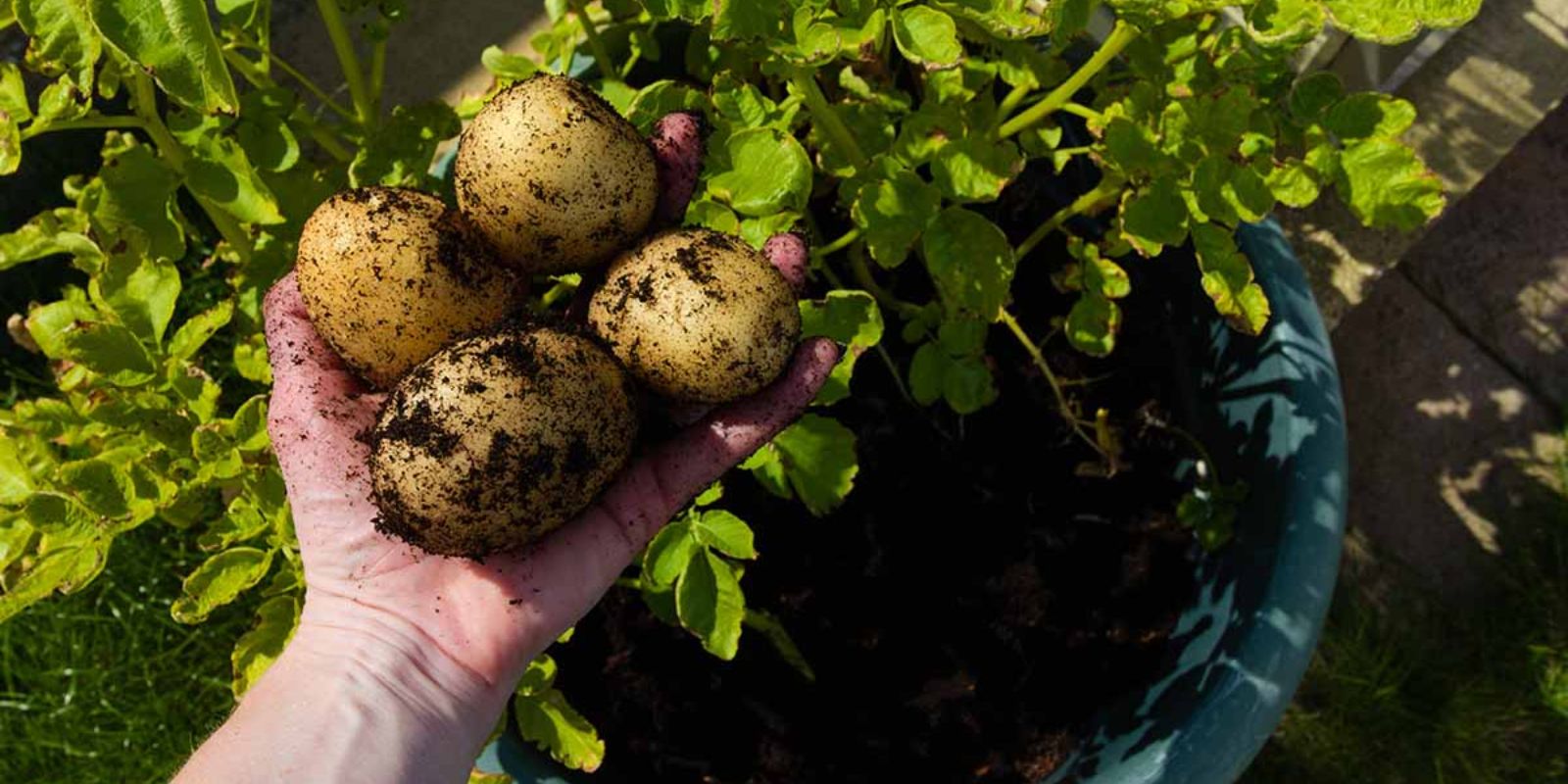Introduction Potatoes are one of the most rewarding crops to grow, whether in traditional garden beds or containers. However, knowing when and how to harvest them is crucial for achieving the best flavor, texture, and storage life. Timing your potato harvest correctly ensures you enjoy a bountiful yield of firm, delicious tubers while preventing damage and disease. This guide will walk you through everything you need to know about harvesting potatoes, from recognizing the right signs to proper storage methods.
Understanding Potato Growth Stages
Before diving into harvesting, it’s important to understand the different growth stages of a potato plant:
- Sprouting Stage (0-4 Weeks) – After planting, seed potatoes sprout, and shoots emerge above the soil.
- Vegetative Growth (4-8 Weeks) – Lush green foliage grows, and the plant focuses on photosynthesis.
- Tuber Initiation (8-12 Weeks) – Underground tubers start forming.
- Bulking Stage (12-16 Weeks) – Potatoes grow in size as the plant directs energy into tuber development.
- Maturation (16+ Weeks) – The foliage begins to yellow and die back, signaling that the potatoes are reaching full maturity.
The timing of the harvest depends on whether you’re growing early, mid-season, or late-season potato varieties.
When to Harvest Potatoes
The best time to harvest depends on the type of potato you’re growing:
- New Potatoes (Young & Tender) – These are harvested early when the plants are still green, around 60-90 days after planting. They are small, thin-skinned, and best eaten fresh.
- Mature Potatoes (For Storage) – Wait 90-120 days or until the foliage turns yellow and dies back. Mature potatoes have tougher skins and are ideal for long-term storage.
Signs That Your Potatoes Are Ready for Harvest
✅ Foliage Changes – When the leaves turn yellow and begin to wither, the plant is signaling that the tubers are mature.
✅ Test Digging – Gently dig around the base of a plant with your hands or a garden fork and check the size of the potatoes.
✅ Skin Firmness Test – Rub the skin of a potato; if it easily peels off, it needs more time to mature. If the skin is firm, it’s ready for harvesting.
✅ Timing & Weather – Ensure you harvest before hard frost sets in, as freezing temperatures can damage the tubers.
Harvesting Potatoes from Garden Beds
1️⃣ Choose the Right Time – A dry, overcast day is ideal for harvesting to prevent sun damage and excessive moisture. 2️⃣ Loosen the Soil – Use a garden fork or spade to gently loosen the soil around the base of the plant. 3️⃣ Lift the Tubers – Carefully lift the plant and collect the potatoes. Avoid damaging the skins. 4️⃣ Sort the Potatoes – Separate damaged or cut potatoes from perfect ones, as they won’t store well. 5️⃣ Let Them Dry – Lay the harvested potatoes on the ground or in a shaded area to dry for a few hours.
Harvesting Potatoes from Containers
1️⃣ Stop Watering – Reduce watering a week before harvesting to allow the soil to dry out slightly. 2️⃣ Tip the Container – Gently tip the container over onto a tarp or soft ground. 3️⃣ Sift Through the Soil – Collect the potatoes by sifting through the soil with your hands. 4️⃣ Separate & Clean – Brush off excess dirt but avoid washing the potatoes if you plan to store them long-term. 5️⃣ Store or Use Fresh – Keep new potatoes for immediate use and mature potatoes for storage.
Curing and Storing Potatoes
Proper storage helps extend the shelf life of your potatoes and prevents sprouting and rot.
✔️ Cure the Potatoes – Lay them in a dark, well-ventilated place at 50-60°F (10-15°C) for 1-2 weeks to toughen the skins. ✔️ Ideal Storage Conditions – Keep potatoes in a cool, dark place at 35-40°F (2-4°C) with moderate humidity. ✔️ Avoid Refrigeration – Cold temperatures can turn starches into sugar, affecting taste and texture. ✔️ Check for Sprouts & Rot – Inspect stored potatoes regularly and remove any that are sprouting or rotting.
Common Mistakes to Avoid
🚫 Harvesting Too Early – Immature potatoes have thin skins and won’t store well. 🚫 Leaving Potatoes Exposed to Sunlight – This causes greening and makes potatoes toxic (due to solanine). 🚫 Washing Potatoes Before Storage – Moisture can cause rot, so only clean them before cooking. 🚫 Storing with Onions – Onions release gases that can cause potatoes to spoil faster.
Conclusion
Harvesting potatoes at the right time ensures you get the best taste and quality from your crop. Whether growing in garden beds or containers, following these simple guidelines will help you maximize your yield and store potatoes successfully.
💬 Have you harvested potatoes this season? Share your experience in the comments! 🥔👇
#PotatoHarvest #GardeningTips #HomegrownVeggies #HarvestTime #GrowYourOwnFood

